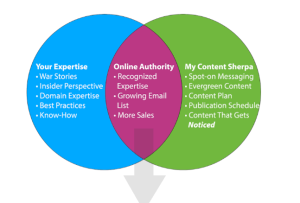
How to Productize Your WordPress Theme Development Business (And Make More Money)
There is, as Shakespeare so memorably put it, a tide in the affairs of men. At a certain point in your life as a WordPress developer you will face a choice: do you saddle up and take the next step for you and your business or stay stuck at your current level?
Get it wrong and you risk stalling your career and getting locked into an endless cycle of bad clients, money worries, and grinding day-to-day dissatisfaction. But productizing your WordPress business is the way to avoid this sorry state of affairs.
In this article, we’ll cover why you need to productize, provide concrete steps to get you started on the right track and give you some useful pointers towards further resources for the future.
Let’s start with a quick definition.
What Is a Productized Services Business?
For a succinct definition we need look no further than Richard Patey:
A productized services business is one that sells and packages up a service as a product with a standardized list of features, a fixed price, and delivered by a set date.
In the context of the WordPress development game, this means moving away from providing a random series of à la carte options that morph wildly across every job and getting serious about the services you’re offering as a business.
Let’s start digging into the detail with a look at notable examples of businesses that are already executing superbly in this area.
Notable Examples of Productivized Services (Non-WordPress)
You might be thinking there’s no realistic way of taking the complex and ever shifting set of daily requirements you have to deal with and turning them into a neatly packaged, consistent whole. Think again!
Here are three solid, service-based examples from outside the WordPress world to show that even the most complex of tasks can be tamed.
With each example below, we’ve highlighted some important points to consider when comparing and contrasting with your own current offering.
1. Kudu – Outsourced Adwords Management
 Managing any Adwords account, regardless of size, is a notoriously involved endeavour. The range of variables you’re dealing with is bewildering and subject to regular change, while the potential downside to making any type of mistake is enormous.
Managing any Adwords account, regardless of size, is a notoriously involved endeavour. The range of variables you’re dealing with is bewildering and subject to regular change, while the potential downside to making any type of mistake is enormous.
It’s a natural candidate for getting in expert outside help, but many people are loath to turn over the reins of such a crucial component of their business. In short, this is potentially a tough, tough sell.
The way Kudu have broken this thorny set of problems out into a cohesive, productised service offering is exemplary and rewards detailed study. Here’s a brief list of takeaways instantly visible from the homepage alone:
- Define the process: a complex offering is elegantly boiled down to a simple 1-2-3 step process for potential clients.
- Establish expert credentials: proof of expertise is immediately highlighted with the prominent display of their Google Partner status.
- Offer social proof: customer success stories are front and centre to reassure prospects straightaway.
- Present pricing clearly: a transparent set of simple to understand pricing options is easily accessible.
Whether you’re an Adwords expert or not, take a few minutes to browse the Kudu site and think about which aspects of how they’ve set out their stall could make sense for your business.
2. Correlation – On-demand Creative Direction
 Correlation is Jane Portman’s productized package offering monthly creative direction for software businesses. This entire area is a classic bugbear for companies large and small, but even a cursory glance at the presentation of the product here makes it clear you’re in the hands of a pro.
Correlation is Jane Portman’s productized package offering monthly creative direction for software businesses. This entire area is a classic bugbear for companies large and small, but even a cursory glance at the presentation of the product here makes it clear you’re in the hands of a pro.
Let’s highlight some of the areas Jane absolutely nails in her presentation:
- Niche selection: with their focus on function over form, software providers tend to need expert creative direction more than most. She’s aiming her services squarely at a large and lucrative niche market.
- Walking the talk: as you’d expect from a creative director, the site looks gorgeous and functions perfectly. No cobbler’s children on display here.
- Copy: take a good look at the content and flow of text on the main product page. This is long-form sales copy at its finest, expertly shot through with precise breakdowns of product features so that client expectations are firmly set in advance. How does your copy fare in comparison?
- Client education: not only is Jane offering to educate future clients on the need for her productized service with the Mastering App Presentation add-on, she’s getting them to pay for the privilege!
- Money-back guarantee: get the product features and the target client base right and this is a killer add-on feature to be able to offer.
3. My Content Sherpa – Outsourced Content Marketing
 Content marketing is another great fit for the productized service approach. All too often, the story in companies is that the person tasked with planning the content strategy is also responsible for executing it. This can easily lead to overwhelm, confusion and poor execution.
Content marketing is another great fit for the productized service approach. All too often, the story in companies is that the person tasked with planning the content strategy is also responsible for executing it. This can easily lead to overwhelm, confusion and poor execution.
My Content Sherpa step expertly into that corridor of uncertainty with a well-packaged set of specific deliverables that clients can quickly get their heads around. Some features to note:
- A convincing backstory: do you have an origin story for your offering?
- Crystal clear deliverables: scroll down the page and you’re rewarded with a tight set of clearly outlined, convincing deliverables.
- Emphasise short and long-term value: note the clever way they distinguish between immediate one-month value here and longer term payoffs.
You Want More?
So, that’s three different industries and three successful approaches to productizing services. There’s no excuse, it can be done!
But before we get down to the nitty-gritty of how to start productizing your own business, let’s move a little closer to home and look at some specific examples of successful productization in the WordPress space.
Notable Examples of Productized Services (WordPress)
One of the many beauties of WordPress as a platform is its incredible flexibility. Brochure site, blog, CMS, full-featured e-commerce solution, community management – WordPress can do it all.
A side-effect of that incredible versatility is that WordPress ends up providing the online infrastructure for a huge range of products. As a developer, you’re naturally in an incredible position to spot opportunities for productizable niches in WordPress and beyond.
Let’s look at two specific examples where WordPress pros like yourself spotted just such an opportunity and ran with it.
1. WP Curve – Site Maintenance and Fixes
 Dan Norris is the canonical example of how productizing a service can kickstart your business. Prior to coming up with the idea of offering flat-rate tweaks and fixes for WordPress, he was $60,000 in the hole following a series of failed business attempts and looking at packing it all in.
Dan Norris is the canonical example of how productizing a service can kickstart your business. Prior to coming up with the idea of offering flat-rate tweaks and fixes for WordPress, he was $60,000 in the hole following a series of failed business attempts and looking at packing it all in.
Fast forward a few years and he’s sitting pretty with monthly recurring revenue shooting towards $75k. Even better, he’s been generous in sharing precise details of his journey all along the way both in the excellent book The 7 Day Startup and over on his blog.
Two key takeaway points to consider when you’re reflecting on the success of Dan’s approach:
- Simple ideas work. Think of how stripped down the basic idea here was. How often do you already provide a very similar service for your clients?
- Competition is healthy. There’s a range of other providers now offering variations on this theme but the future market is still enormous. Is there a specific niche you’re already serving that could be targeted with exactly this kind of productized offering?
2. Restaurant Engine – Custom Restaurant Site Design
 The almost wilfully awful nature of most restaurant websites was a running joke for years before someone finally realised the opportunity on offer in applying a productized approach to the problem.
The almost wilfully awful nature of most restaurant websites was a running joke for years before someone finally realised the opportunity on offer in applying a productized approach to the problem.
Brian Casel was the smart cookie who stepped into the breach with the WordPress-powered Restaurant Engine, and the rest is history.
Have a read of his wonderful overview of exactly why you should be leaning towards offering a productized service and consider signing up to learn at the feet of the master himself.
Why You Need to Productize Your Service
Okay – we’ve introduced the concept of productized services and looked at real-life examples in WordPress and beyond. But you might still be saying to yourself: is this really for me? Can’t I just tick along the way I have been so far?
Let’s look at some concrete reasons why you need to take the plunge.
Stop Living in a Box
Let’s begin with the one-person service business scenario: If you stick at this level, there’s a built-in limit to how much you can ever hope to earn.
Sure, you can raise your hourly or daily rates and gradually make a pretty decent living, but you’re still operating within an artificially constricted earning environment and trading your time for money. Productization is the way out of this box.
Scale Solutions, Not Problems
Let’s take it a step further and say you’ve already expanded your team or are looking to do so. Fail to productize and, rather than taking your business to the next level, you risk dramatically expanding your list of problems.
The danger here is that you end up spending your whole time pitching while having to simultaneously worry about background quality and managing a team. The discipline and separation of concerns that productization enforces on your business is the way to avoid this.
Avoid Client Hassle
It’s very easy to get backed into a corner with clients when you’re a one-person operation. Cashflow pressure can force you into taking on clients that you just know are going to be difficult. Add in potentially poorly defined deliverables and you’re making a bad situation worse.
Productization is the answer to both of those problems. You’ll be free to select your clients and pre-qualify them through a tightly defined product description you’re confident of delivering on.
Move Beyond Feast or Famine
It’s all too easy as a freelancer or business to slip into an all-or-nothing financial cycle and mindset. This is dangerous in a number of ways. First of all, it’s massively stressful. Secondly, it’s massively risky. One unexpectedly troublesome project has the potential to cause a truly horrible set of knock-on problems in both your personal and professional life.
Productization gives you a path to cashflow clarity. Your sales pipeline becomes simpler to manage and your future revenue is substantially more predictable. You’re also free to lock in future earnings through models such as recurring subscriptions.
Build A Viable Exit Strategy
Fail to productize and there’s a very real risk that, rather than having a business, all you really end up with is a job. And nobody wants to buy a job. Get productization right and you have an asset that can be sold; often for an attractive multiple of your annual earnings.
Hopefully you’re starting to get fired up about the possibilities by now. It’s time to move on to the heart of the matter: how to go about productizing your services as a WordPress developer.
In each of the sections below, we’ll close with the example of a WordPress theme developer – we’ll call him Brian – who notices the majority of his client base over the last year have been English as a Second Language (ESL) teachers or small language schools.
He typically meets with the client to define needs and then customizes an existing feature-rich theme to match their requirements. He’s looking to move from this scattershot approach to a systematized product offering.
Defining the Product
Product definition is an iterative, creative process, so your mileage may vary with some of the steps below. Stick to the general sequence and you’ll be ahead of the pack.
1. What Do You Currently Actually Do?
Begin where you are. Before you start brainstorming the list of things you could do – which with WordPress and your current skillset are near infinite – start with what you actually do. Write it down.
2. What Do Existing Clients Usually Ask for?
What clients ask for and what you actually end up doing can be very different things. Formally review what you’ve been asked to do by clients over the last 6-12 months. Is there an opportunity you’re constantly turning down? Or a recurring task you’d much rather avoid in the future? Make a note of it.
3. Take a Long, Hard Look at Yourself
Whether you’re a one-person outfit or a small development team, you’ll take the first steps towards productization with resources you already have at hand.
Honestly evaluate the specific skillsets, strengths and weaknesses that you and your current team can bring to the table and write them down.
You’re not ruling anything out here. You can always partner up or hire further down the line, but you need to stay realistic about your options and abilities from the outset.
4. Survey the Landscape
With the preparatory work done, you have a solid base to start doing some serious market research. Again, make this a written stage. Brainstorm an initial set of ideas and pick a small set of promising areas to investigate in detail.
Look at what other people in the space are doing. Break down their offerings and take as much inspiration – positive and negative – as you can for your own. Then review your findings in the light of the previous three steps and make your decision.
5. Nailing down the Product Feature Sets
Once you’ve picked your general direction, it’s time to get serious. Start writing down the core feature set. Don’t throw the kitchen sink in here. Pare your offering down to the minimal viable set of features and iterate from there.
6. Leave Room for the Future
Once you have the basics down, let yourself off the leash a little and allow yourself to dream about the future. Write down some possible directions for the business if everything goes well.
You’re not committing to these per se, just establishing a potential trajectory. This will also give you something to navigate by when you’re mired in execution details further down the line.
Here’s how Brian handles this stage. He begins by making a spreadsheet of all the specific theme modifications ESL teachers have asked him for and starts breaking them into categories that could be promoted as product feature sets.
He notices that some of the items consistently requested by clients – SEO optimization and ongoing marketing help for example – are outside his core competencies but makes a note to explore them as future partnership opportunities with other businesses.
With those two steps taken, he begins work on rejigging his existing website to focus the copy and presentation on a core product aimed squarely at getting ESL teachers and small language schools up and running online.
With the basic product defined – in our example business and hopefully for yourselves – it’s time to turn to the subject of pricing.
Anchoring and Pricing
At the end of the day, price is simply what people are prepared to pay for a product or service. And whatever that number is, it usually has very little to do with the underlying costs.
Start thinking of price as a reflection of the story you tell the world about your product. The good news is that you have a lot of room for manoeuvre in how that story is told. One of the main weapons at your disposal here is anchoring.
Anchoring is one of the classic human cognitive biases and refers simply to the process by which an initial piece of information will set the stage for how subsequent or adjacent information is received.
We humans are not quite as much in control of our own decisions as we like to think, particularly when it comes to purchasing. Your reaction to any individual price will be strongly influenced by the way it is framed and the context in which it appears.
Think of Apple’s recent announcement of the eye-wateringly expensive Apple Watch Edition that starts at $10,000. Suddenly the $349 entry-level sports model they announced a few months previously looks fairly reasonable. Or cast your eyes over the full range of crafty anchoring techniques that go into putting together the average high-class restaurant menu.
In short, anchoring works, so use it.
Savvy online marketers have long recognized the power of the pricing table in terms of anchoring and customer segmentation. Most of the examples we listed earlier on make full use of it. So should you. Here’s a stripped down scenario in the context of WordPress theme development:
- Option 1: setting up an existing theme for a client. No customization. Low price.
- Option 2: customizing a theme or framework. A premium price but not excessive. This is your sweet spot.
- Option 3: the full package with everything but the kitchen sink thrown in. Completely bespoke design at a bordering-on-outrageous price.
You’re covertly nudging the client towards Option 2. It’s the most cost-effective and efficient process for you, but there are no regrets if they self-segment themselves and plump for 1 or 3. For most, the anchors at either end of the scale will make Option 2 leap out as the reasonable solution for most clients.
Let’s move back to Brian’s product for ESL teachers. He quickly identifies three basic pricing tiers plus an “SMB” option targeted at language schools exclusively. The three standard packages are split out as follows:
- Starter: Very affordably priced. A simple package aimed at giving an ESL teacher a modern, fresh online presence using a basic theme with minimal customization.
- Freelancer: This is Brian’s sweet spot. A theme-based design with a defined range of graphic and functional customization options that the teacher can select from. Standard pricing.
- Pro: This is a high-price tier targeted at experienced teachers with high-value private clients. Brian offers add-ons such as private forums and membership options built in to the theme plus additional bespoke customizations priced per hour.
The final SMB option runs on a “contact us for a quote” pricing model designed to give Brian the flexibility to take full advantage of the larger budgets business clients will typically be operating with. This is Brian’s equivalent of the “Enterprise” pricing you’ll see on other sites.
So, we have a defined product and some sensible pricing options. Things are hotting up! The next stage is getting customers in the door.
Marketing Your Productized Service
Marketing, particularly for technical people, is an often overlooked piece of the product puzzle. It’s a huge area and we can only scratch the surface here, but keep the following basics in mind.
Content Marketing and Customer Education
Content marketing is huge when it comes to productized services. Back when you were a simple service provider, desperately hustling from job to job, the content marketing was effectively you – in person, live and direct. Now it’s time to properly outsource that task to your website.
Once you have the basic product offering nailed down in terms of online copy, start adding marketing value by creating scheduled long-form content on your blog that delivers value for potential clients at every stage of the buying cycle.
Then make sure you’re converting that attention to something ‘monetizable’ with downloadable lead magnets that entice your visitors to share their contact details.
Customer Lifetime Value
If you’re selling a product, you need to start thinking in terms of Customer Lifetime Value and getting a read on what your average number here is going to be.
Why is this so important? It’s simple. That number, along with your conversion metrics, tells you how much you can afford to spend across your marketing channels.
Establishing Your Marketing Mix
Every business is different, but you will need a plan in place for each of the following three marketing channels at an absolute minimum:
- Organic: content marketing is at the heart of your organic engine, but make sure you’re also covered on the standard SEO basics.
- Social: depending on your approach, this is either a useless time sink or a virtually bulletproof source of cheap, high-quality leads. Start smart and kick on from there.
- Email: the cultivation of a high-quality email list is one of the most consistently overlooked sources of marketing value there is and a solid gold method for establishing a real connection with prospects. Already have a list? You should probably send more email than you do.
Once you’re up and running, and have a clearer idea of the numbers involved, you can start adding further channels such as paid advertising into the mix and begin identifying potential joint venture partners.
Brian’s first stage is reaching out to a graphic designer to help with producing some highly shareable brochure content describing his new product range that can be used on and offline.
With this in place, he immediately contacts every previous teaching client with this material, offers a 10% discount on future work and encourages them to share the product information with other teachers.
He also begins work on content for a six-part email autoresponder sequence targeting the pain points ESL teachers experience in getting set up online.
Okay, so far both ourselves and Brian have made some real progress on the road to productization, but there’s one glaring omission we need to address: standardizing the actual execution of the service.
Standardizing Delivery of Your Productized Service
Each product will inevitably be different, so we’ll stick to generally applicable points.
Begin by identifying the moving parts in your service. Fortunately, you did much of the heavy lifting back when you defined the initial product, but that was on paper. Now you’re actually executing.
As Mike Tyson famously said: “Everyone has a plan until they get hit in the face.” How is your plan holding up in the real world?
Once the moving parts are written down, you need to document the exact sequence of steps that are required to perform them. Turn these into Standard Operating Procedures and, where necessary, leverage the power of checklists.
There will be resistance here, both internally and from your team. There always is. Muscle through it.
The next step is crucial. Constantly review your procedures and documentation as you carry them out and relentlessly optimize. The process of standardization is not a one-shot deal. It’s an ongoing process that you and your team commit to.
A final point: don’t try and do this all at once. Keep chipping away at the details whenever you can and you’ll see a steady improvement in your processes and execution that will translate directly to bottom line improvements over time.
For Brian – as a one-man band – the first steps are rigorously turning his day-to-day workflow into a series of documented checklists. This tees up the possibility of gradually hiring out work as his client base expands.
Scaling Your Productized Service
All things being well, at some stage your fledgling productized service business is going to start creaking at the seams – in a positive sense! As revenue grows, you’re going to need to level up and start scaling.
This is a huge opportunity for your business, but also a potential moment of danger. Here are three points to pay particular attention to when you’re scaling up:
1. Staffing
You’re already in great shape here because you have a defined set of Standard Operating Procedures that new hires can be trained on and implement almost immediately. Use this fact to your advantage and hire cautiously, rather than in crazy spurts.
2. Costs/Runway
The need for financial discipline is constant. You are most likely not operating in the fairytale world of modern start-ups, where burning through someone else’s money with gay abandon is a type of sport. This is your ship, so steer it wisely.
If you’re lucky enough to be blessed with an initial surge of success, don’t be tempted to swing for the fences with large capital outlays or grandiose spending plans. Slow and steady wins the race.
3. Moving to Fully Programmatic Solutions
A lot of the early lifting in productization will inevitably be manual, no matter how slick the customer-facing interface is. Always seek to programatically optimize but don’t fall victim to the lure of the technological magic bullet or massive unnecessary rewrite.
With Brian’s early-stage productized service offering for ESL teachers, the immediate scaling issues are mostly staffing related. Based on the positive feedback so far though, he already has one eye on the wider teaching/training market nationwide. Thanks to his strategic thinking to date, the road ahead is wide open!
Further Resources for Productizing Your Service
Productizing your existing business is no 24-hour project. It takes time. With that in mind, we’ve put together a quick list of useful books and podcasts to point you in the right direction.
Further Reading
- Built to Sell by John Warrilow. The classic guide to systematizing a service business and getting it ready for eventual sale.
- Work the System by Sam Carpenter. The best overview of the benefits of standardization and process you’re ever going to read.
- The 7 Day Startup by Dan Norris. A timely guide from a fellow WordPress professional who’s been down every step of the road you’re about to tread on.
Further Listening
Productizing services has been a hot topic in the small-business podcasting community the last couple of years. Here’s some of the greatest hits to get you started. Hit up the show notes on any of these entries for a world of further tips:
- Tropical MBA Episode 282 – Starting with Productized Services. A great intro to the subject from Dan and Ian at Tropical MBA, and the latest in a series of episodes from the pair on that topic.
- Common Mistakes Moving to Productized Services. It’s not all fun and games; the good folks at Demand Genesis cover some of the common pitfalls to avoid.
- Brian Casel on Productized Services. Superb overview from one of the most experienced practitioners out there.
Conclusion
If you’ve made it this far, you’re already in great shape in terms of kicking on and effectively productizing your WordPress theme development business. Let’s quickly recap the basic steps you need to take before we wrap up:
- Define your product offering.
- Use anchoring to fine-tune your product pricing.
- Market your product effectively.
- Relentlessly systematize your product delivery.
- Sensibly scale your productized business as you grow.
This five-step process is a ladder to significantly improved revenue for you and your business. Climb the rungs and let us know if we’ve missed any resources you find useful in your journey or if you have any questions or comments. Good luck!
Liked the article? You should follow me on Twitter



Thanks for the mention of Restaurant Engine and my Productize stuff. But my name is Brian, not Dan :)
sorry for that, already changed ;D
Wow man, this is crazy. Definitely follow them :)
Great stuff in here, thanks!
“Productized services” it all!